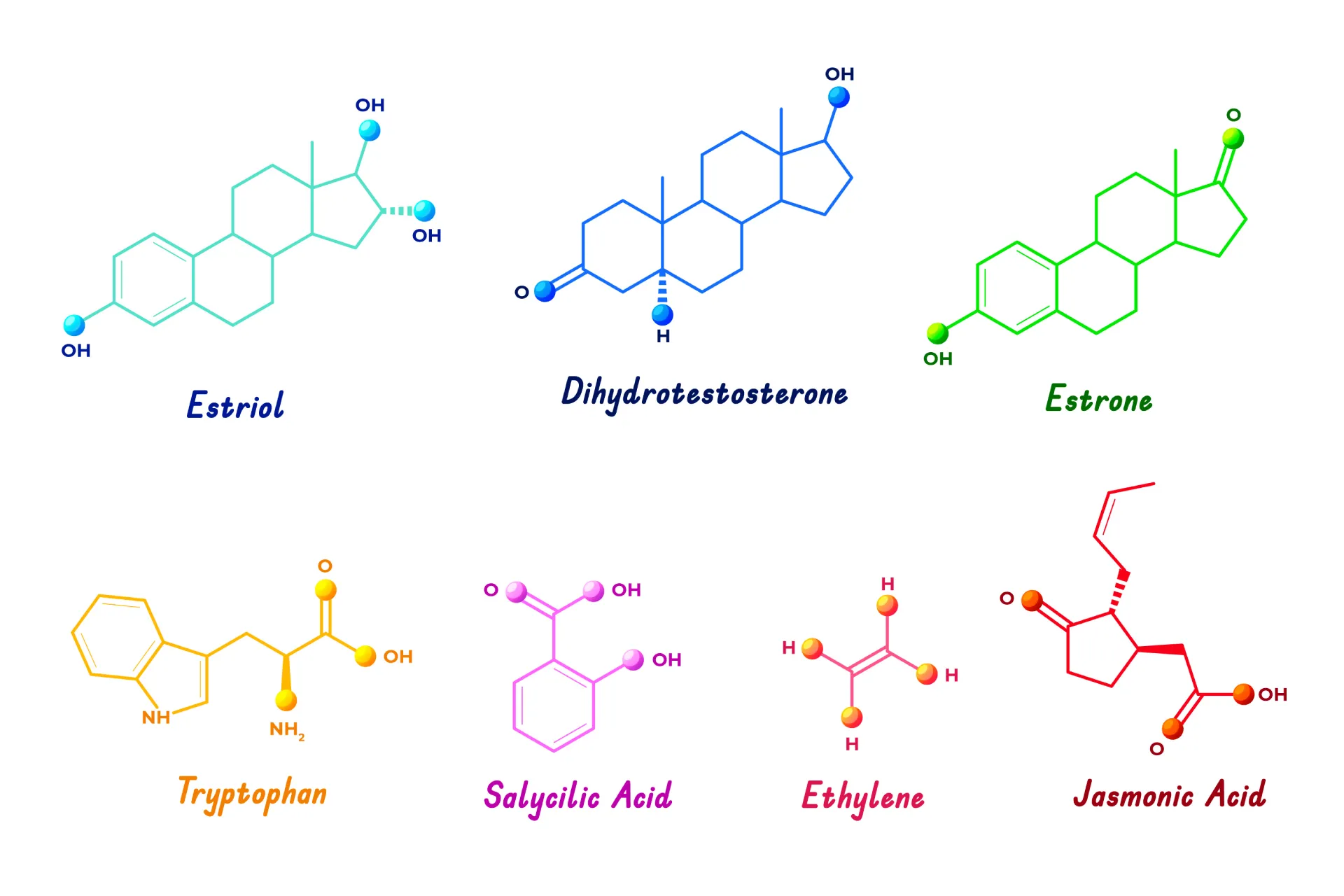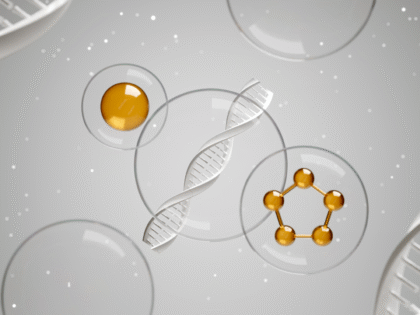The science of amino acids, their structure and synthesis
-
PepEurope
- Posted on
- 0 comments

Peptides have become a crucial element of modern biochemical and pharmaceutical research. Whether you're studying drug development, protein interactions, or cell repair mechanisms, understanding how peptides are formed and how they function is crucial.
Underlying all of this is amino acid chemistry, amino acid structure, and the process of peptide synthesis, which encompasses both the techniques of chemical peptide synthesis and the broader principles of peptide chemistry.
IN pepeurope.net We specialize in offering research-grade peptides to laboratories and academic institutions, helping to push the boundaries of peptide capabilities in controlled scientific environments.
What are amino acids and why are they important?
To understand peptides, we must begin with amino acids, the basic building blocks of all peptides and proteins. Each amino acid has a central carbon atom, called the alpha carbon, which is connected to four groups: an amino group, a carboxyl group, a hydrogen atom, and a unique side chain known as the R group. This side chain distinguishes each amino acid, giving it specific properties such as polarity, charge, or hydrophobicity.
The structure of amino acids allows them to act as both acids and bases, which is why they are called amphoteric. At physiological pH, they often exist in their zwitterionic form, meaning they carry both positive and negative charges simultaneously. This chemical nature makes them ideal for joining together via peptide bonds.
Basics of amino acid chemistry
Amino acids are the building blocks of peptides and proteins. Each amino acid has a central (alpha) carbon atom connected to:
- Carboxyl group (-COOH)
- Amino group (-NH₂)
- A hydrogen atom
- A unique side chain (R group)
This structure gives amino acids an amphoteric nature, allowing them to act as both acids and bases. At physiological pH, they often exist as zwitterions, carrying both positive and negative charges.
Sema Beauty & Slim (weight control / healthy skin)
Sema Metabolic Boost (Appetite / Metabolism / Energy)
Metabolic Boost Duo (Appetite Suppression / Energy / Metabolism)
Sleep and Slim Pack (weight control / sleep regeneration)
Amino acid structure and peptide bond formation
Peptides are formed when amino acids They join together via a peptide bond, an amide bond, which is formed when the carboxyl group of one amino acid reacts with the amino group of another. Depending on the number of amino acids involved, a short or longer polypeptide is formed.
Chains of up to 50 amino acids are typically classified as peptides, with longer ones typically classified as proteins. These molecules play incredibly important roles in the body, acting as hormones (such as insulin), neurotransmitters, growth factors, and even antimicrobials, among other things.
Creating peptides in the laboratory is a fascinating process. Thanks to advances in chemical peptide synthesis, scientists can now design peptides with precise sequences and modifications tailored to their research.
The two main methods used are solid-phase peptide synthesis (SPPS) and liquid-phase peptide synthesis (LPPS). SPPS is currently the most popular technique in most laboratories because it simplifies purification and allows for automation. LPPS, although older, is still useful for the mass production of small peptides.
There are also more sustainable approaches, such as chemoenzymatic synthesis, which combines chemical steps with enzyme-based methods to reduce waste and increase yield.
The synthesis process usually follows several main steps:
- Security: Temporarily blocking reactive amino acid fragments to avoid undesirable reactions.
- Activation and coupling: Enabling the formation of peptide bonds between amino acids.
- Deprotection: Removal of protecting groups before the next reaction.
- Fission and purification: Chain finalization and isolation of pure peptide.
What is peptide chemistry?
This process allows scientists to precisely engineer peptides, introducing custom modifications, unnatural amino acids, or sequences that would otherwise be difficult to study using biological systems alone. This is where peptide chemistry comes into its own, giving scientists the freedom to design and test peptides for highly specific biological functions.
Peptide chemistry encompasses the study of peptide formation, structure, and function. Peptides are more than just short fragments of proteins—they play significant roles in the body, acting as:
- Hormones (e.g. insulin)
- Neurotransmitters
- Immune modulators
- Cell signaling molecules
In the laboratory, peptides are studied to better understand these biological functions or to develop synthetic analogues for pharmaceutical research.
What role do peptides play in the human body? Although the peptides offered on pepeurope.net are intended for research purposes only and are not intended for human consumption, scientific studies show that peptides influence many important biological processes. They help regulate hormone levels, support muscle growth and recovery, improve fat metabolism, and even support immune and neurological function. This is why synthetic peptides are being studied for their potential therapeutic role in treating conditions such as diabetes, cancer, skin aging, and autoimmune diseases.
Sema Beauty & Slim (weight control / healthy skin)
Sema Metabolic Boost (Appetite / Metabolism / Energy)
Metabolic Boost Duo (Appetite Suppression / Energy / Metabolism)
Sleep and Slim Pack (weight control / sleep regeneration)
Chemical Peptide Synthesis: How Research Peptides Are Made
In research studies, peptides are typically administered in a manner that ensures optimal distribution and absorption. Common methods include subcutaneous or intramuscular injection, and sometimes topical application in dermatological studies.
Oral use is rare because the digestive system breaks down peptides before they reach the bloodstream. The duration of peptide use in a study depends entirely on the research objective, but typical time frames range from 4 to 12 weeks, often followed by a rest or observation period to assess results.
If you're looking for peptides for research, pepeurope.net specializes in delivering high-quality, laboratory-tested peptides throughout Europe. Our products are intended solely for laboratory and research use, not for human or animal use, and we ensure compliance with regulatory standards. Scientists choose us for:
- High purity peptides designed for accuracy and reliability
- Wide selection of popular and custom peptide sequences
- Fast and safe shipping within Europe
- Clear product documentation and technical support
Main methods of peptide synthesis
It involves anchoring a peptide chain to an insoluble resin. Amino acids are added stepwise, allowing for automation and easy purification.
- Liquid-phase peptide synthesis (LPPS)
An older technique used mainly for mass production of smaller peptides.
- Chemoenzymatic synthesis
Combines chemical reactions with enzymatic steps for greater stability and specificity.
Step-by-step overview of the synthesis process
- Security – Blocking reactive amino acid sites to prevent side reactions
- Activation and coupling – Use of activating factors to create strong peptide bonds
- Deprotection – Removing protective groups
- Fission and purification – Release of the peptide from the solid resin and purification
These steps ensure a high-purity product and precise sequence control, which is essential for consistent research results.
Understanding peptide synthesis, amino acid structure, and peptide chemistry is essential if you work in the life sciences, pharmacology, or biotechnology. At pepeurope.net, we're here to support your scientific journey by offering reliable, research-grade peptides to help you discover what peptides can truly do.
Winooski
Understanding amino acid chemistry, amino acid structure, and peptide synthesis provides scientists with a foundation for exploring advanced biomedical concepts. Using techniques such as solid-phase peptide synthesis, scientists can now create complex, high-purity peptides for use in research ranging from drug development and diagnostics to disease modeling.
If you are looking for proven, research-grade peptides in Europe, pepeurope.net offers quality and expertise tailored to your research needs.














